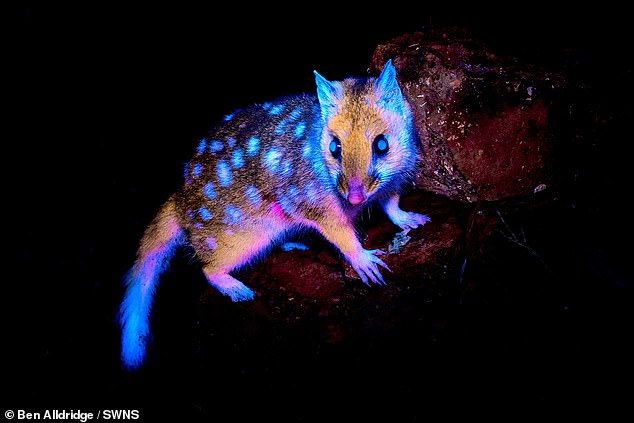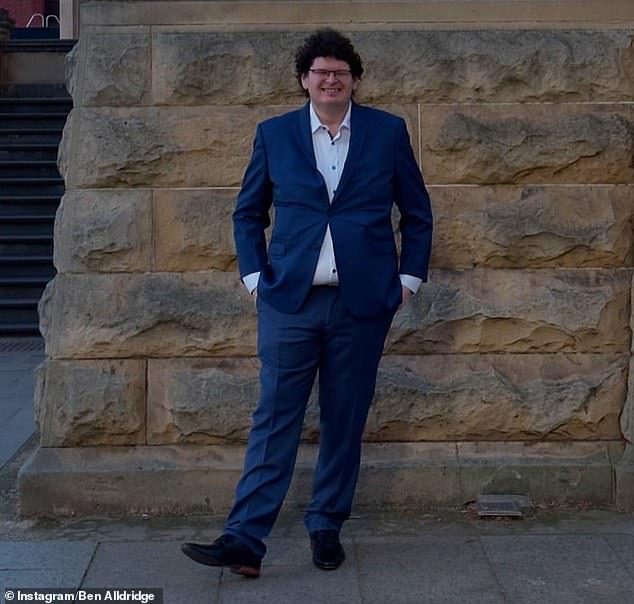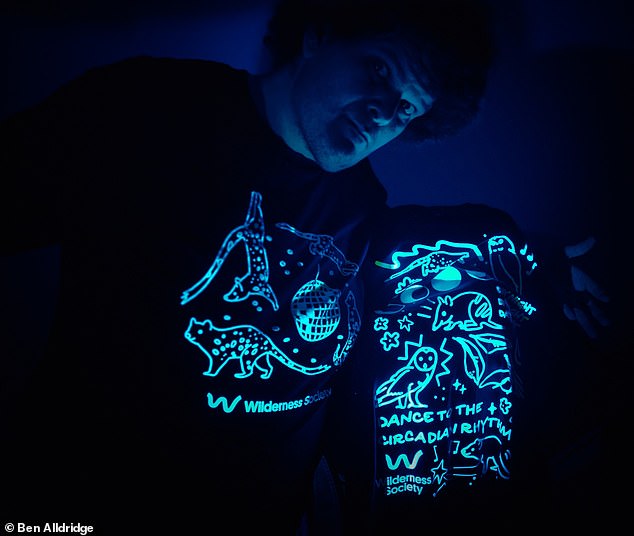A Tasmanian photographer has become the first person to ever capture an eastern quoll glowing in the bush.
Ben Alldridge captured the stunning shot of the animal biofluorescing under invisible ultraviolet light.
It is said to be the first time this glowing phenomenon has been recorded in the endangered marsupial’s natural habitat.
Mr Alldridge said the glowing effect is due to the animal’s fur absorbing UV and re-emitting visible colours, a phenomenon known to occur in many mammals, including the Tasmanian devil and wombats.
‘Where their fur is normally fawn or black, under certain wavelengths of light, they exhibit a process referred to as biofluorescence – like nature’s version of a white shirt glowing at a disco,’ Mr Alldridge said.
Its biological purpose remains speculative, with theories it is related to communication, camouflage, or mating especially in low-light conditions.
Since many nocturnal animals like marsupials can see UV light or have vision sensitive to blue and green wavelengths, fluorescence might be a visual signal they can use while remaining less visible to predators.
Mr Alldridge said he will continue to work to decode the mystery.

An incredible first-ever image of an eastern quoll glowing in Tasmania’s south west wilderness

Marine biologist turned photographer Ben Alldridge (pictured) is one of 12 finalists announced for this year’s Beaker Street Science Photography Prize
‘I’d say it’s likely a messaging or identifying system similar to our fingerprints, but that is wild speculation at best,’ he said.
‘For now we will just say they like to party.’
For Mr Alldridge, part of his work is ongoing research into the impacts of light pollution and habitat degradation on how these species are living after dark.
‘The amount of light we waste illuminating space – both physical and now literal – is ridiculous, and in many cases is counterproductive to why the lights are installed to begin with,’ he said.
‘As we get to grips more with the nocturnal world and how these adaptations work, we can start to optimise our own built environments to introduce as little impact as possible.’
The remarkable photo is one of 12 finalists announced for this year’s Beaker Street Science Photography Prize, Tasmania’s premier science photography competition.
From dark sky conservation and photosynthesising sea slugs to auroras, slime moulds and high-speed wildlife drama, this year’s finalists offer a visual reminder of the wonder, complexity and fragility of the world around us said festival founder Margo Adler.
‘This year’s finalists really capture what Beaker Street is all about. Making science visible, beautiful and emotionally resonant,’ she said.

Ben Alldridge said capturing the incredible photo has invigorated him to dive deeper
‘These photographs let us see the world differently, and in some cases quite literally reveal things we’ve never seen before.’
The photographs will be on display at the Tasmanian Museum and Art Gallery from August 6 to 31.












